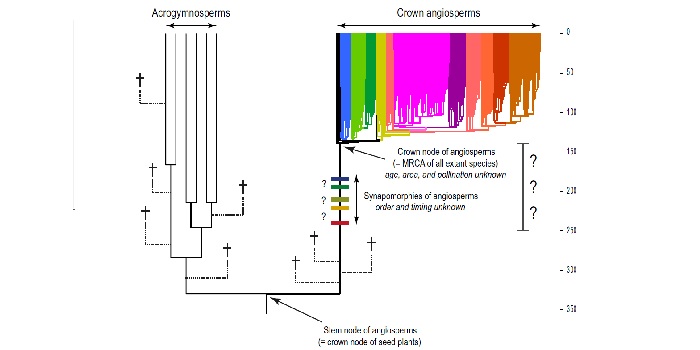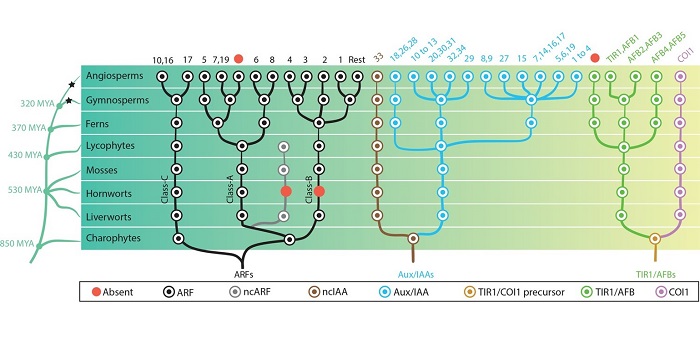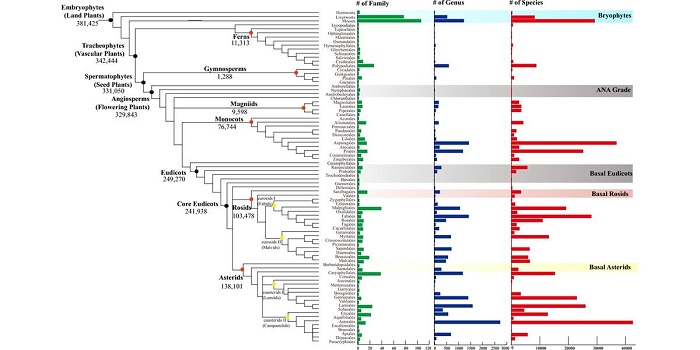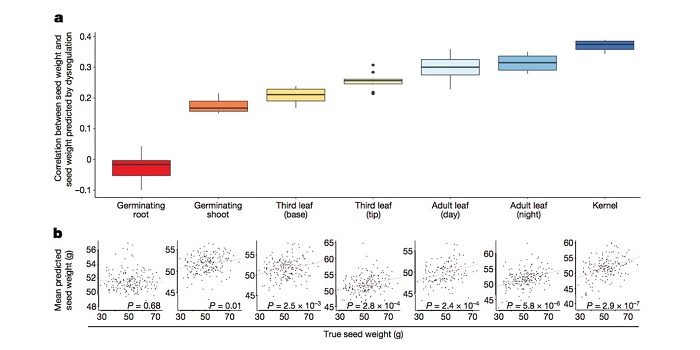
Review: Key questions and challenges in angiosperm macroevolution (New Phytol)
Plant Science Research WeeklyAre you curious about why and how angiosperms, flowering plants, are the youngest lineage of land plants and have become the most abundant group of plants? You are not alone. Generations of botanists and evolutionary biologists have wondered about this same thing. Many questions have been answered, such…

Deep evolutionary roots for the plant hormone auxin (eLIFE)
Plant Science Research WeeklyAuxin is an endogenous plant hormone that orchestrates complex tissue development across diverse green plant lineages. In a recent article, Mutte et al. performed a deep phylogenomics analysis of known and predicted auxin signalling mechanisms present in green plants and their algal predecessors. This…

Commentary. 10KP: A phylodiverse genome sequencing plan (GigaScience)
Plant Science Research WeeklyNobody doubts the great insights we have gained about plant diversity and evolution from genome sequencing, but the patchy nature of available genomes within the plant phylogeny remains a problem. Cheng et al. describe the 10KP (10,000 Plants) Genome Sequencing Project, which aims to sequence genomes…

Dysregulation of expression correlates with rare-allele burden and fitness loss in maize ($) (Nature)
Plant Science Research WeeklyDeleterious mutations often underlie disease susceptibility and reduced fitness, but are very difficult to study due to their low frequency in the population. Maize is a great system for studying deleterious mutations because of high genetic diversity and the rapid decay in genetic linkage, enabling…

Review. Great moments in evolution: the conquest of land by plants ($) (Curr Opin Plant Biol)
Plant Science Research WeeklyPlant occupation of land was a crucial step in evolution, without which life as we know it today would not exist. Stefan Rensing takes us on an evolutionary journey, discussing the advent of photosynthesis in cyanobacteria and eukaryotic algae, which led to atmospheric oxygen, to plant terrestrialization,…

Review: Relative symbiont input and the lichen symbiotic outcome ($) (Curr Opin Plant Biol)
Plant Science Research WeeklyLichen are quite special, as they don’t exist independently of their partnership. Lichen are composed of a fungal partner and a photosynthetic partner (the algal or cyanobacterial photobiont), and these partnerships have evolved independently many times. Spribille provides an overview of some of…

The subgenomes of polyploid plants evolve at different rates (Plant Cell)
Plant Science Research WeeklyPolyploidy can result either through genome doubling followed by intraspecific crosses, or when two genomes from independent species hybridize, leading to autopolyploidy, or allopolyploidy, respectively. Polyploidy is an important evolutionary tool; the resultant redundancy from the duplication of genes…

Evolutionary history resolves global organization of root functional traits ($) (Nature)
Plant Science Research WeeklyRoots differ in their form and function, as they need to compete for water and nutrients in the wide range of environment. Although we are starting to understand some adaptive aspects of individual root morphology features, the adaptive features of root organization are still poorly understood. Ma and…

A genome for gnetophytes and early evolution of seed plants (Nature Plants)
Plant Science Research WeeklyFor decades, the Gnetophyte lineage has puzzled plant scientists in its correct phylogenetic placement. When taxonomists largely focused on morphological characteristics before the advent of molecular biology, it made sense to treat these apparently intermediate species as a transitional group between…

